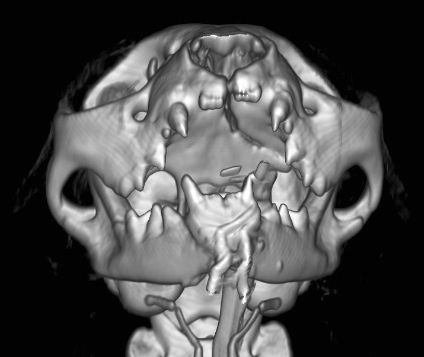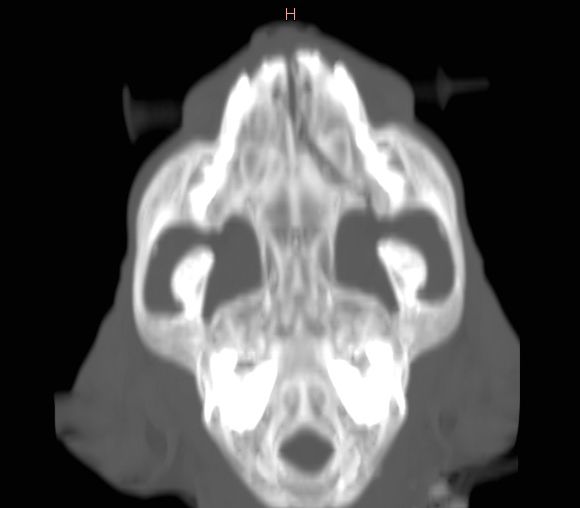Categories
Interdental Bonding Following Maxillary Fracture in a Cat
Maxillary Fracture – Interdental Bonding
Jaw fractures are a common sequel to trauma such as road accidents and dog bites in cats. Fracture fixation can be challenging but can sometimes be achieved using a relatively simple technique which involves bonding the canine teeth together.
This two-year-old cat was referred to Peter Southerden at Eastcott Veterinary Referrals for treatment of a jaw fracture sustained in a road accident. A CT scan demonstrated a fracture extending from the incisive bone through the hard palate and palatine bone to the base of the zygomatic arch. Though the temporomandibular joints were normal and there were no mandibular fractures the cat had a significant malocclusion which prevented her from closing her mouth. She also had left sided facial paralysis.
3D reconstruction CT scan demonstrating maxillary fracture
Dorsal slice of CT scan showing maxillary fracture
Treatment consisted of interdental bonding between her maxillary and mandibular canine teeth in normal occlusion using dental composite. A gap of about 10mm was left between the incisors to allow the patient to lap soft food.
The fixation was removed after four weeks. The fracture had healed and the occlusion was normal. The left sided facial paralysis prevented the patient from blinking. This could predispose to corneal ulceration and was treated by Ida Gilbert by a left lateral canthoplasty.


